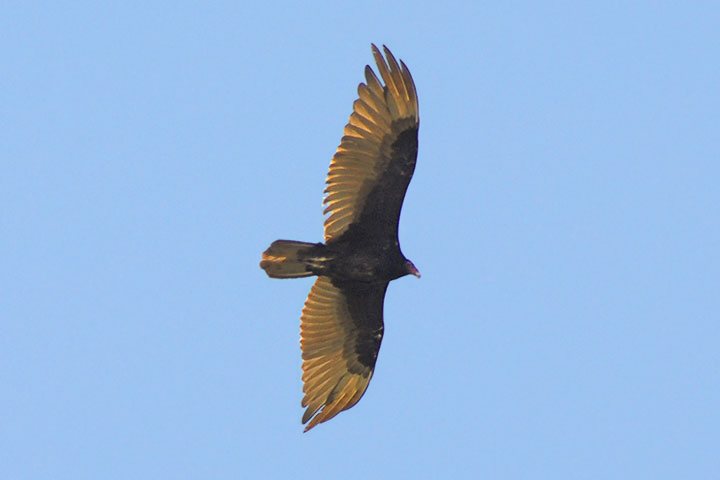Gliding & soaring
A photograph will often not enable one to distinguish between gliding and soaring. In neither case is the bird flapping its wings, and so it is not travelling under its own power. The difference is that with gliding, the bird is losing altitude, whereas with soaring, the bird is making use of updraughts in the atmosphere to maintain altitude or even climb. The updraughts might take the form of thermals (buoyant bubbles of air rising from the warm ground) or upslope winds (air rising as a result of the wind blowing up the slope of a mountain).
Often one can make the distinction by watching the bird’s behavior. If an eagle, say, is flying over the Lake and alternates fixed wing and flapping flight, it is almost assuredly gliding. If a hawk is circling high over the land or mountain and almost never flaps its wings, it is undoubtedly soaring.
Generally, only the largest birds soar. Indeed, the only passerine to regularly soar is the largest of them, the Raven. Even medium to small sized birds may glide, often when coming in for a landing.
 This male Osprey was alternately flapping and gliding above the waters of the Lake. When this picture was taken it was gliding.
This male Osprey was alternately flapping and gliding above the waters of the Lake. When this picture was taken it was gliding.
 A flying Mallard is almost always seen travelling under power. On this occasion, however, it had jumped off an embankment, flapped a few times, and is now seen gliding down to the water.
A flying Mallard is almost always seen travelling under power. On this occasion, however, it had jumped off an embankment, flapped a few times, and is now seen gliding down to the water.
 A Bald Eagle is gliding between periods of flapping as it patrols the waters of the Lake.
A Bald Eagle is gliding between periods of flapping as it patrols the waters of the Lake.
 This Red-tailed Hawk is soaring over a sun-warmed hillside.
This Red-tailed Hawk is soaring over a sun-warmed hillside.
 A Turkey Vulture soars over open fields as it searches for carion.
A Turkey Vulture soars over open fields as it searches for carion.
 Ravens are the only passerines large enough to soar on a regular basis. They often do it, as here, in pairs during courtship.
Ravens are the only passerines large enough to soar on a regular basis. They often do it, as here, in pairs during courtship.
![]()